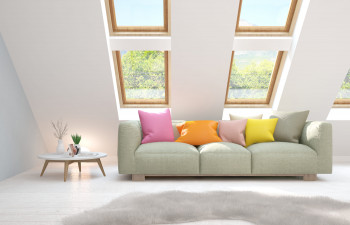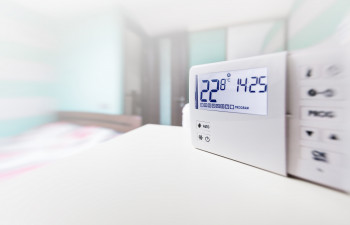VRF indoor units airflow limit: A step further for guaranteed performances
In the context of the continuous development of the Variable Refrigerant Flow (VRF) certification programme, a review of the tested VRF units for the 2019 certification campaign showed many units with a very high airflow rate. Despite the firm certification and surveillance rules of the program, this showed that some units potentially used inflated airflow rate to increase the performances. To avoid this kind of certification rules circumvention, the certification committee decided to apply a limit of 275 m3/h/kW on the airflow of each indoor unit. This decision is based on scientific studies concerning the performances required of HVAC systems to ensure dehumidification and comfort requirement.
Literature review
The international standards in the HVAC industry are permanently changing and adding new measures to improve the comfort conditions in air-conditioned buildings. This results in a set of limits to the design parameters of a VRF systems such as Sensible Heat Ratio (SHR), Bypass Factor (BF), Air Flow rate (AF), Etc.
The comfort conditions of HVAC systems are widely studied in the literature, specifically the humidity conditions. A recent ASHRAE research project investigated the dehumidification level of several commercial buildings (including offices, schools, restaurants, and retail stores). The sensible heat ratios were calculated for any hour in a year when the air conditioning system was ON and the building’s occupancy was greater than zero. The study results by fixing the SHR limit to SHR<0.82 at 100 % load and SHR<0.85 at 75 %.
The coil Bypass Factor has been also calculated by ASHRAE [1] under Air-conditioning and Refrigeration Institute (ARI) conditions and has been set to an approximate range of 0.049 ≤BF≤0.080.
While usually a set of parameters is fixed including the airflow rate of the unit to determine the design supply temperature of the unit, some studies showed that the airflow rate must also be monitored since it has a direct effect of the dehumidification and hence thermal comfort cannot be reached even in an ideal design supply temperature of the unit. Murphy [2] tested the dehumidification level in a classroom under different weather scenarios. The base of the study is to fix the airflow rate of the cooling unit and calculating the supply temperature. The results show that with an air flow rate as high as 400 m3/h/kW the relative humidity of the classroom will be higher than 67 %, either in peak dew point condition or during cool, rainy day conditions which means the comfort cannot be reached in the classroom even with a set temperature of 23.3 °C. This is because contrary to popular belief, high indoor humidity levels can be an issue in nearly all geographic locations, not just in areas where hot, and humid conditions prevail. Whenever high relative humidity levels exist at or near a cold, porous surface, moisture adsorption increases and moisture-related problems (such as increased health risks from mold growth and premature replacement of equipment and furnishings) become likely. Finally, there are ways to improve the dehumidification performance like reducing the airflow which results in a lower supply air temperature for a given load condition, and therefore, more moisture is removed from the air.
Mustafa [3] specifically investigated the effect of the airflow rate on the humidification parameters. The results show that above a defined airflow, the humidity level increases with increasing the airflow rate.
Finally, a study on different airflow rate scenarios to maintain the indoor test conditions of 27 °C DB and 19 °C WB showed that the airflow rate should not exceed 247 m3/h/kW in ideal heat exchanger conditions (BF=0) [4]. This air flow rate is suitable for considering thermal comfort with the current test method.
However, considering that the realistic BF of current heat exchangers is closer to 0.1 than to 0, an airflow rate of 275 m3/h/kW is more representative of the dehumidification condition.
Eurovent Certification Committee decision
As a result of the scientific studies and following numerous programme committee meetings, it was decided that the airflow at standard air condition defined in the standard EN 14511-3:2018 shall not exceed 275 m3/h/kw for both cassette and ducted VRF indoor units. The limit shall apply in cooling and heating mode and only for units above 12 kW. This new rule is effective since March 2021 which made a great impact on the unit ranges in the 2021 catalogues of several manufacturers. For some manufacturers, it is represented by the appearance of new ranges of products and the stop of the production of previous indoor units versions. For others, the performances of the same unit on the 2021 catalogue are decreased to that of 2020. For all cases, 2021 has marked a new era of guaranteed certified performances.
References
[1] ANSI/ASHRAE, «Standard Method of Test for the Evaluation of Building Energy Analysis Computer Programs» chez ANSI/ASHRAE Standard 140-2001, 2004.
[2] J. Murphy, «Dehumidification Performance of HVAC Systems» ASHRAE Journal, pp. 23-29, 2002.
[3] A. T. Mustafa, «EXPERIMENTAL STUDY OF AIR FLOW RATE EFFECTS ON HUMIDIFICATION PARAMETERS WITH PREHEATING AND DEHUMIDIFICATION PROCESS CHANGING» ARPN Journal of Engineering and Applied Sciences, vol. 6, n° %19, 2011.
[5] Daikin, Consideration of thermal comfort for the review of Lot 10 - Cooling mode testing, 2020.
Dr. A. NOUR EDDINE






